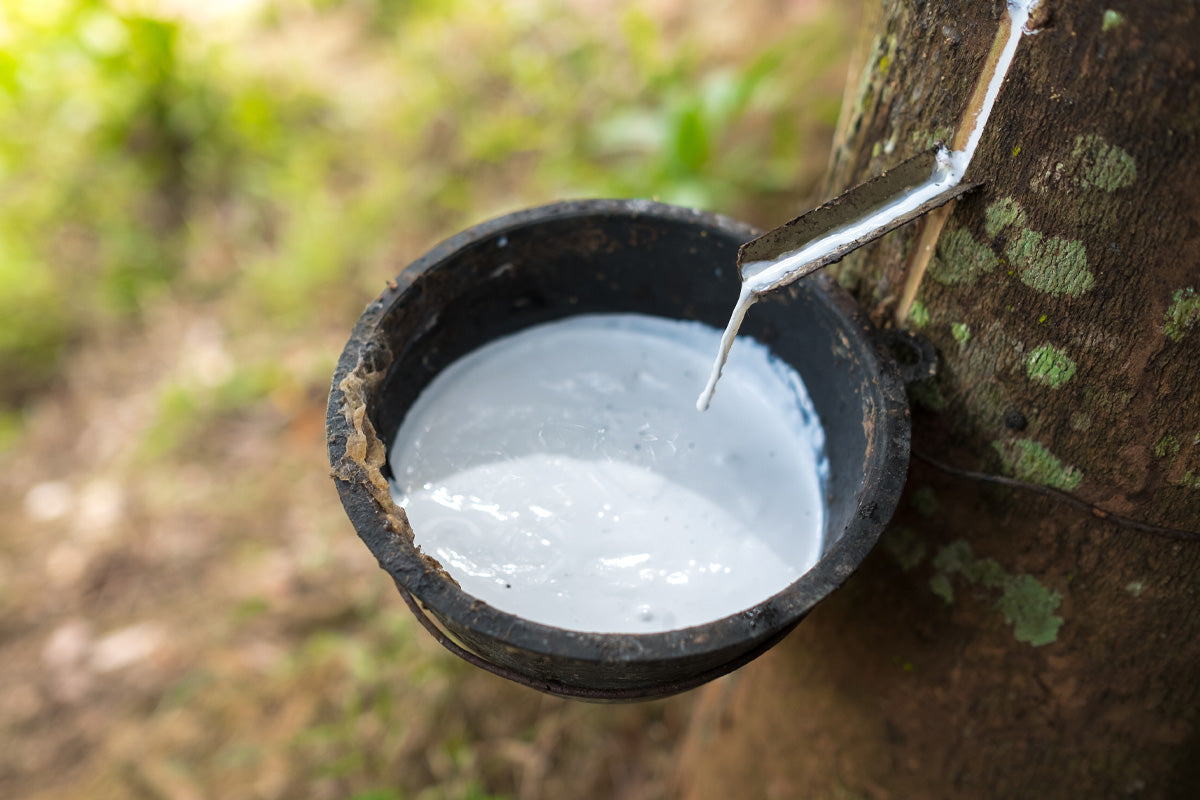Isn’t latex a synthetic/man-made material?
When you think of common latex products, such as medical-grade gloves, it is hard to imagine - such is their look, feel and durability - that they could be made from anything other than synthetic or chemical-based materials.
Whilst synthetic latex does exist, the majority of latex products are made from a version or blend of natural latex, which is what we use in our mattresses.

How do you use natural latex?
We use blended natural latex foam in our mattresses as a plastic-free alternative to the synthetic foams which are prevalent across the mattress industry. It provides all of the support and flexibility of synthetic foam, with improved breathability and no toxic chemicals.

How is natural latex foam made?
It starts with the milky liquid sap of the Hevea Brasiliensis rubber tree, which is obtained through a harmless, regenerative process called ‘tapping’. (Did you know this process is also used to make maple syrup?)
The liquid latex is then mixed with soaps and additives for up to 24 hours to increase its elasticity, resilience and fire resistance. Next, a giant standing mixer (not unlike the one you’d use to make cakes) is used to whip up large batches of the sap, introducing air to create a foamy, elastic texture.
During this process, a gelling agent is added to the mix before it is laid to rest in moulds to solidify and cure into sheets. These very same sheets are then used across our mattress and topper ranges.
Which production process is your natural latex made with?
Our latex supplier creates our latex sheets using the Dunlop process. In the Dunlop process, the moulds are filled to the rim, whereas in the Talalay process (the alternative process through which natural latex is produced) pre foamed compound is poured into the mould.

Why is your natural latex grey?
If you’re wondering why our latex is grey instead of white, it’s because we mix in a touch of graphite to make it naturally fire-retardant, ensuring it meets all the British fire regulation standards and is completely safe for your homes. This helps us avoid using any nasty fire retardant chemicals to meet compliance requirements.

Is latex a sustainable material?
Latex begins life as a liquid naturally found in the rubber tree, that neutralises up to 90 million tonnes of CO2 per year. It is also a brilliantly renewable material, with each tree able to produce latex for up to 25 years.
We work with a latex supplier whose plantations are managed with a sustainable and planet-friendly approach. This ensures their rubber trees are sustainably managed with consideration to the environment and those involved in the production process. In these plantations, for every retired tree a new sapling is planted.

